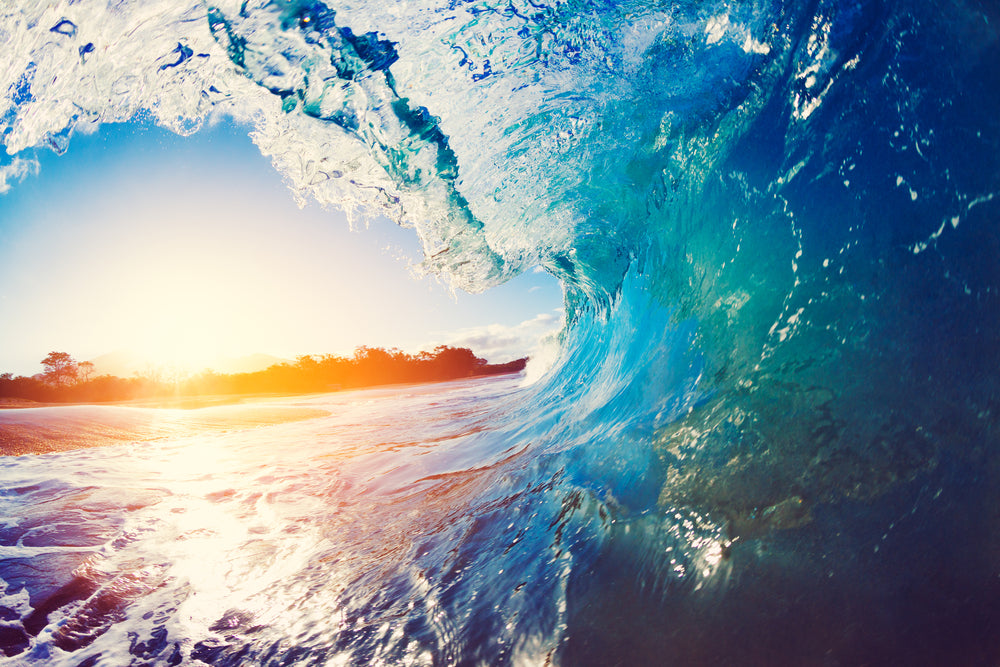Climate change and global warming have been hot topics for the last couple of decades. The phrase ocean acidification may not sound quite as familiar as the other two phrases, but it’s a growing environmental concern frequently described as the “evil twin of global warming.”

Opinions on the severity of climate change vary, and it’s understandable that a lot of passion is vested on all fronts. On one side of the argument, it’s been asserted that ocean acidification is clearly due to humankind’s burning of fossil fuels. That verdict has helped lead the charge for a broad emphasis on reducing human production of carbon emissions. But some believe that’s not the whole story, and that additional factors are unrelated to the human element.
For example, research done by NASA (the National Aeronautics and Space Administration) states plainly that
“people aren’t the only players changing the ocean carbon cycle. Over decades, natural cycles in weather and ocean currents alter the rate at which the ocean soaks up and vents carbon dioxide.”
Clearly, there are no quick answers, and nothing is simple about the aim to meet the challenges of ocean carbon balance. Rising ocean temperatures are likely related but may not be solely due to human threats to oceans. Nature herself could also be a key player.
What is Ocean Acidification?

To better understand ocean acidification and how it’s linked to marine life threats, and to examine the arguments fairly, you need to understand the chemistry behind two terms closely related to ocean acidification - carbon dioxide and pH.
Carbon dioxide, or CO2, is a gas found naturally in the earth’s atmosphere. It’s part of what is given off by humans and animals each time they exhale. Plant life needs carbon dioxide and sunshine to grow, and then in turn, plants give off oxygen which humans and animals need to survive. CO2 and other gases in the atmosphere help to trap the sun’s heat much like a greenhouse does. Without this happening, our earth would be a frozen planet. As for the ocean, greenhouse effects are believed to be a source of warming.
The second word - pH - is a measure of how acidic or alkaline a solution is, such as ocean water. The pH of solutions is measured on a scale of 0 to 14, with plain water being neutral on the pH scale. Pure water, without the calcium and other minerals that are found in seawater, has a pH of 7.
If there’s acid present in water, the number of the pH will be less than 7. When it’s more alkaline, the number will be greater than 7. So a lower number on the pH scale means the acid level is higher, and a higher number means the water is more alkaline. Got the general idea?
The exchange of carbon on our globe happens all the time since carbon is chemically the backbone of all life on earth. Between the atmosphere, plant and animal life, the waters of the ocean, the processes of erosion, volcanic activity, and man’s burning of fossil fuels which add to carbon emission effects, there’s a steady continuous movement of carbon known as the carbon cycle.
Carbon dioxide is freely absorbed by ocean water, which is a good thing. In fact, carbon exchange occurs quite easily between the ocean’s surface waters and the atmosphere. Masses of carbon are stored in the deepest ocean depths. About 93% of CO2 is found in the oceans.
Almost half of all man-made CO2 ends up being absorbed into the ocean. The more carbon that the ocean stores, the less carbon there is left in the atmosphere. The ocean’s ability to do this has been an amazing balancing act up to this point!
The ready absorption of CO2 has prevented the earth from experiencing a much greater progression of climate change. Many more serious changes would most likely have occurred already if all the carbon dioxide had stayed in the air.
If CO2 in the atmosphere continues to increase - whether it’s from manmade activity or natural emissions of carbon - a possible outcome would be the formation of more carbonic acid in ocean water, mainly near the surface of the ocean. Surface acidity would increase. This outcome is a major reason for concern among many members of the scientific community.
A technical but clear explanation from the Environmental Protection Agency about how ocean water becomes more acidic is useful:
“Once carbon dioxide dissolves in water, carbon dioxide molecules react with water molecules to form carbonic acid. Carbonic acid can be further transformed to bicarbonate and carbonate ions. These four different forms of carbon exist in balanced proportions in seawater. As more carbon dioxide is added to seawater, the balance shifts and carbonate is lost as it is transformed to bicarbonate due to increasing acidity.”
Why Are Concerns About Ocean Acidification On the Rise?

Before the onset of the industrial revolution, the pH of ocean water was around 8.2. The salty sea water was slightly alkaline. Most scientists agree it probably had been at that pH level for eons past. Now it’s about 8.1. That may not sound like much of a difference, but if you understand how the acid/alkaline scale works, the current level is about 25% more acidic than the level was 200 years ago!
Optimum pH levels promote the conditions that are best for much of marine life. It’s especially essential for those creatures that depend on pH levels with specific parameters to utilize calcium carbonate minerals saturating the ocean. These minerals are components used to make either calcium-based shells or exoskeletons(skeletal structures on the outside protecting an animal’s body.)
Researchers believe that ocean acidification can lead to certain areas of the ocean being undersaturated with these vital minerals. Coral reefs, barnacles, oysters, clams, mussels, sea urchins, and other calcifying species of marine life are among the groups originally thought to be most at risk since they have calcium-based shells or exoskeletons.
These animals provide crucial nursery habitats for fish, protection from erosion, help to mitigate storm damage, and also serve as food sources for other ocean creatures. But research has revealed that these varieties are not the only organisms that would be hurt by a significant pH change.
There are also tiny ocean creatures that are important food sources for predators further up the food chain - even whales consume these diminutive animals along with plants in their huge gulps of krill. The shells of the miniature specimens could dissolve if pH and carbonate levels continue to move away from the ideal. The loss of these abundant food sources would affect many other higher types of marine animals.
Not all ocean creatures and plant life would be equally affected by rising acid in the water since some may be able to adapt over time. Algae and seagrasses could even benefit from higher CO2 levels. However, there will be a ripple effect if and when certain animal populations begin to fade. Shortages of life at the bottom of the food chain could, in sequence, cause their natural predators’ numbers to diminish through a lack of sustenance.
Naturally, any of these progressions would eventually take a damaging toll on humans. Those who rely primarily on ocean life for the food staples, or whole communities whose living is based on harvesting fish or shellfish, could be devastated if the threat to marine biodiversity continues.
Human factors other than the burning of fossil fuels need to be studied closely and monitored. One example is when nitrogen and phosphorous are applied to crops or lawns in the form of fertilizers. Nearby water can carry those excess nutrients, ending up in coastal waters. In that particular habitat, the excess nutrients stimulate more rapid growth of algae. Then when algae die and decompose, carbon dioxide is added directly to the water, resulting in acidification once again.
Climate scientists concur that any type of pollution in the ocean only adds to the complexities of global warming. Organisms that might be able to adapt to a limited amount of water acidification could disappear when additional stressors like the burgeoning “plastics pollution” of ocean waters continue to increase.
What’s next?

Since ocean acidification is just one element among many that can threaten the survival of marine life, programs addressing acidification need to be a good fit within overall engagement to meet other challenges. The most significant question is how to implement a cooperative, multi-faceted plan that will prevent ocean global issues from worsening in the future.
These global affairs are complicated. It’s going to take time to sort it all out. Environmental scientists will continue to bring clarity to the underlying causes and their interconnection. But one thing everyone can agree on already is that pollution is real, it’s not going to go away on its own, and we should each be willing to do whatever it takes to keep our planet unspoiled.
